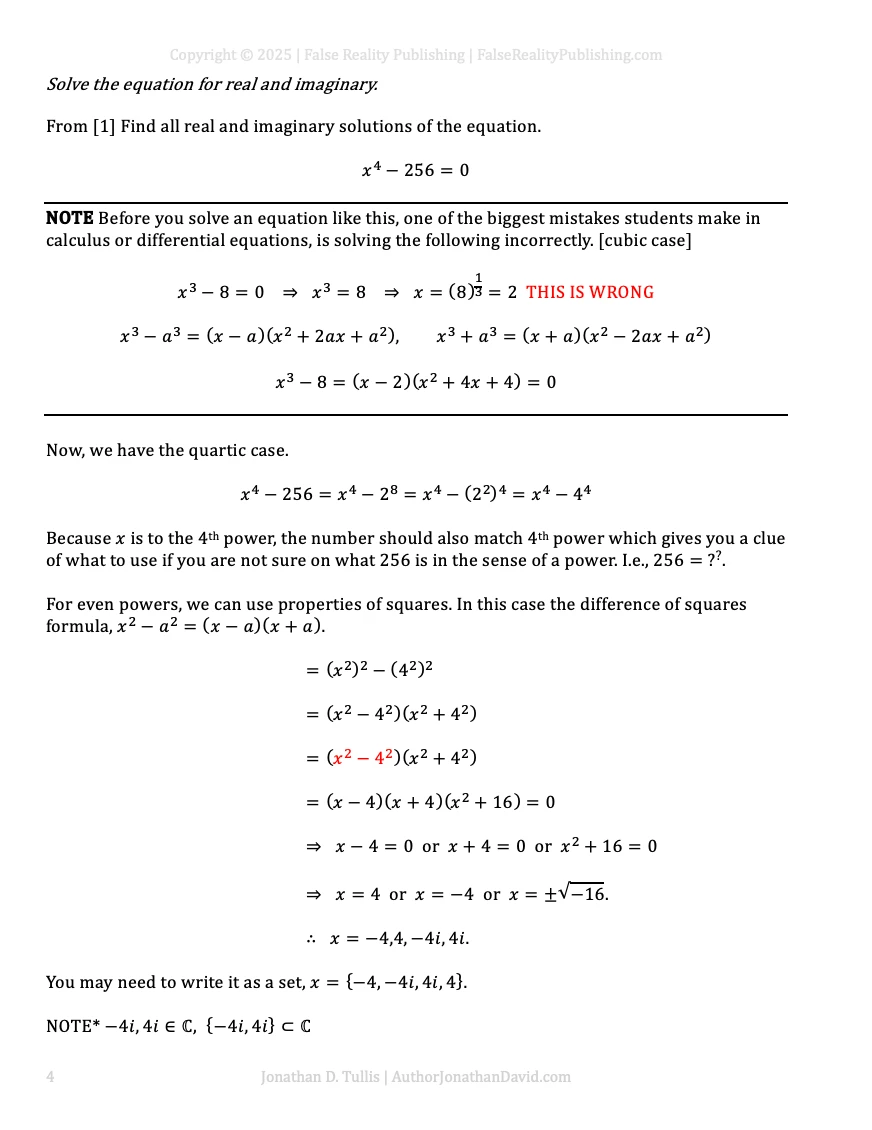Solving Quartic Equations with Real and Imaginary Roots – A Student's Guide
This post walks through how to solve a fourth-degree polynomial equation (quartic equation) and identify all real and imaginary solutions. It includes a key reminder for students not to confuse cube root shortcuts with proper factorization and introduces correct techniques using the difference of squares and factoring.
Example solved in the image:
x⁴ − 256 = 0
Key steps covered:
-
Recognizing that 256 = 4⁴
-
Applying the identity for difference of squares: x² − a² = (x − a)(x + a)
-
Continuing the factorization down to quadratics: (x² − 16)(x² + 16)
-
Solving the real roots: x = ±4
-
Solving the imaginary roots: x = ±4i
Final solution set:
x = {–4, –4i, 4i, 4}
This visual is taken directly from the Ultimate Crash Course for STEM Majors, which prepares students for algebra, calculus, and complex number theory.
Get lifetime access to the complete guide:
https://author-jonathan-david-shop.fourthwall.com/products/the-ultimate-crash-course-includes-bonus-ultimate-cheat-sheet-800-pages-of-goodness
View all math books, cheat sheets, and bundled resources:
https://author-jonathan-david-shop.fourthwall.com
Search tags: solving quartic equations, real and imaginary roots, x⁴ − 256 = 0, difference of squares, how to factor x⁴ − a⁴, algebra complex solutions, imaginary numbers algebra, solving equations with i, polynomial factorization example.

